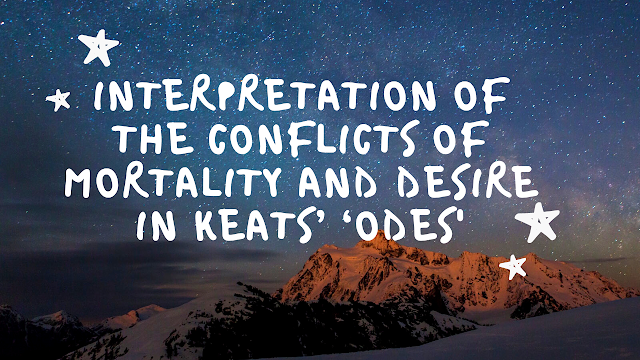Interpretation of the Conflicts of Mortality and Desire in Keats’ ‘Odes'

Desire and Mortality in the Odes of John Keats John Keats, one of the greatest English Romantic poets, is often celebrated as the “poet of beauty.” Keats explores the themes of desire, mortality, art, and the fleeting nature of life in depth in his well-known odes, "Ode to a Nightingale," "Ode on a Grecian Urn," and "To Autumn." Along with praising beauty and the natural world, these lyrical poems also consider death, an inevitable aspect of life. The Conflict Between Desire and Mortality in “Ode to a Nightingale” In "Ode to a Nightingale," the speaker longs to escape the hardships and tribulations of human existence after being mesmerized by the nightingale's mesmerizing song. He imagines sipping wine while standing in a pitch-black forest and vanishing into the tranquil, timeless realm of the bird. He enters a dreamlike trance where death seems pleasant and painless because he wants to forget about his problems in this world. Neverthel...

